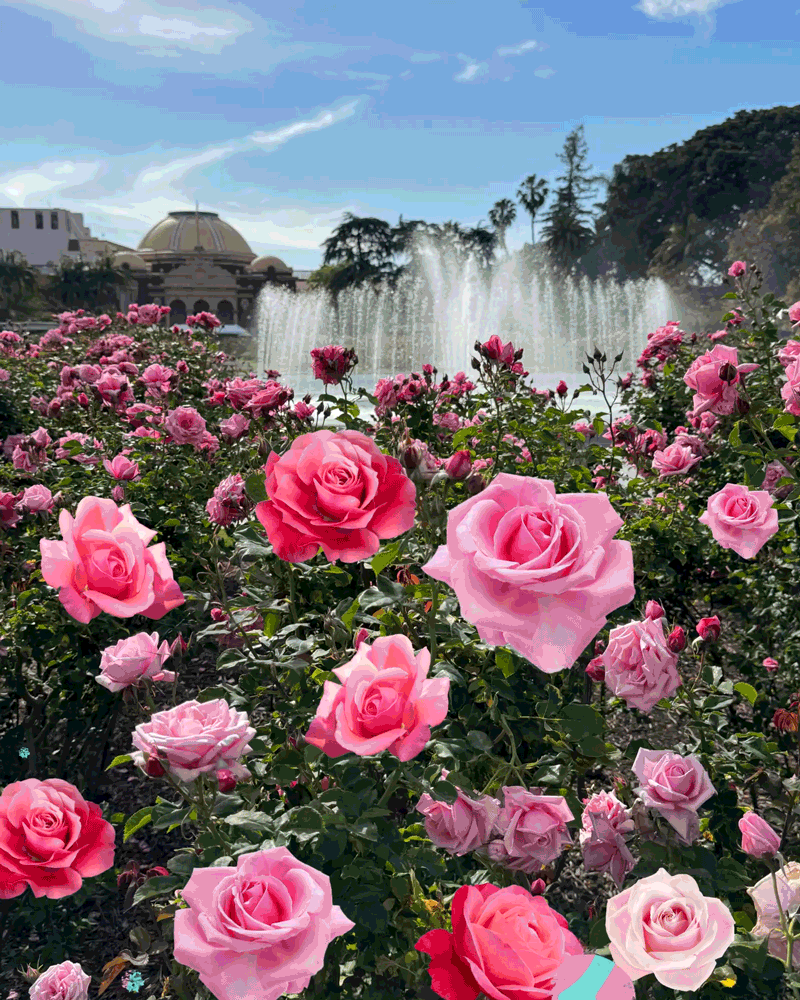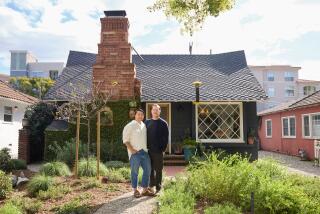Petal Pushing in a Caribbean Garden of Eden
KINGSTOWN, St. Vincent — “Is this where Captain Bligh’s breadfruit tree is?”
Cornelius, our local guide through St. Vincent’s Botanical Gardens, laughed. “Yeah, yeah, sure, sure, but let me show you around first. You will see some what you never see before,” he said in his lilting Caribbean accent.
I knew that this 20-acre garden on the Caribbean island of St. Vincent, 100 miles west of Barbados, was more than 200 years old--the oldest of its kind in the Western Hemisphere. But its age didn’t pique my interest as much as the breadfruit that Bligh brought here from Tahiti in the late 1700s.
Seeing the tree would satisfy a childhood longing. What was this tree that so inspired Captain Bligh to sacrifice the comfort and well-being of the men on the Bounty? I wanted to see the tree that I had read about decades before and I told Cornelius so. But Cornelius, an islander in his late 20s and a student of botany, knew better. He took me the long way around to the breadfruit tree.
My first impression of the Botanical Gardens was of one great, noble greenness erupting against the tropical sky. Palms--squat, tall, full and slender--moved back and forth in tune with the constant breeze. Thick layers of philodendron wrapped themselves up the trunks of trees, like deep green ruffles. Flowering vines made dainty, looped bridges from one tree to the next. And flowers, massive in size and breathtakingly beautiful, blazed out of the greenness like a Walt Disney cartoon of the Garden of Eden.
“Things grow very easily on St. Vincent,” Cornelius said. “It rains often and the soil is volcanic.” In fact, at the island’s north end sits Soufriere, a still-active volcano that last erupted as recently as 1979.
My five companions and I, on a 1 1/2-day shore excursion before setting sail for the Grenadines, trooped after Cornelius, admiring a profusion of red poinsettia. “That is native to Mexico,” he told us and we soon discovered that the plants, herbs and trees in the garden are more likely to be native to Trinidad or Vietnam or the South Pacific (as is the famous breadfruit tree) than to St. Vincent and the Grenadines. Typical of this transplantation was the lovely orchid tree from South America that was our first stop.
“You ladies like a fancy broach?” Cornelius asked us.
We nodded, never believing that he would pick the exotic pink flower from the tree. After all, in gardens all over the United States, we had been warned not to pick the flowers. But there were no signs in this garden and Cornelius was in charge. First, he picked two of the butterfly-shaped leaves of an incredible orchid and split them halfway down, sliding them together to form a clover shape of deep green. Into the center of this he placed the gorgeous pink five-tongued orchid. “This is not a true orchid,” he said, handing it to me. But what did I care? It was the most lush, most exotic corsage ever to grace my T-shirt.
The gardens were established in 1765, Cornelius told us, for two reasons: to grow plants useful in medicine, and to grow plants and spices profitable for trade. As we followed him over the neatly mowed grounds, he stopped to break off pieces of waist-high lemon grass, “used for soothing tea and also for citronella candles.” As he talked, Cornelius handed us cloves, nutmeg and even a small yellow lime. “They’re fresher when they’re still green.” Our pockets began to smell like Key lime and pumpkin pies.
We passed mahogany trees from Honduras, Norfolk pines from the South Pacific (discovered by Captain Cook), pink and yellow and orange orchids, frangipani, bougainvillea and plumbago, which stuck to our shirts like Velcro. It even stuck to our ears, and the three of us women took Cornelius’ offerings and made lavender plumbago earrings, which we wore for the rest of the tour. We passed the yellow cassia tree, which, according to Cornelius, is also called the “Sausage Tree” because of the long, brown seed pods hanging down like sausages. “Very useful as a laxative,” Cornelius said, offering us one.
We followed Cornelius under a huge crescent of yellow flowers called “The Allamanda Arch,” and down a walk enclosed on either side by walls of ruffly, scarlet flowers. This was “Hibiscus Avenue,” and Cornelius informed us that we had just embarked on the “Wedding Walk”--a walk taken by many newlywed islanders after the ceremony. It must be one of the most deliriously romantic spots on Earth, full of sweetness and color and absolutely hidden from the busy world.
As we walked along, we noticed how few people were in the gardens. Three local women sitting on a nearby bench were reading from their flower books, and several couples lounged in the grass. Just beyond the lily pond we saw a family picnicking in a white gazebo, but we seemed to be the only tourists in sight. Cornelius said this is not unusual. For most visitors, St. Vincent is only a stopping-off place on a cruise of the Windward Islands, and the sights of the interior are sadly overlooked.
Near the end of the tour, Cornelius said, “Next you will see the cannonball tree, so called because its seed pods give a bang and explode when ripe. This tree,” he said, waving us forward, “has a flower that is all the ladies’ favorite.”
When we saw the pink cannonball flower, we were enchanted. It was, indeed, the loveliest and sweetest flower we had seen. Cornelius called it “My Lady’s Compact,” and he pointed out the “comb,” under the thick, yellowish white center, or carpel, of the flower, the “brush,” which is made up of dozens of pink, spiky stamens. And in the center, between “brush” and “comb” is a flat, white area, the “mirror.” And now, when Cornelius said, “I think each of the ladies should have one,” we didn’t look guiltily around for the botanical police. We cheered and attached the beautiful “Lady’s Compact” to our T-shirts with paper clips.
As we walked over a small rise in the direction of the famous breadfruit tree, a sudden darkening of the sky signaled a shower. By the time we hurried to the breadfruit’s sheltering branches, the shower was over and the big tree shook down drops of water from its long, dark, deeply lobed leaves.
There it was, rising 60 feet in the air, glistening in the February sun. The big, bumpy fruit hung together in tempting, green clusters, calling to my mind an image of the Bounty, setting sail 200 years ago with more than a thousand of these, in pots and tubs, filling the aft cabin so that it resembled “a botanical garden.” Because of the mutiny, none of those trees made it. It took Bligh several more years and another ship--H.M.S. Providence--to return with the breadfruit to St. Vincent, and what I was seeing was a sucker from that tree, still flourishing 197 years later.
As Cornelius listed the many uses of it--breadfruit bread, pie and pudding; breadfruit mashed, baked and boiled; breadfruit gum for caulking boats; cloth woven from the fibers of its wood, and tea made from the leaf--I began to realize what a gift the terrible Bligh had given to the islands. I looked up into the branches at the round, succulent-looking fruit. A couple of pounds apiece, I guessed. I wondered how they would feel: bumpy like a lime or cool and heavy like a melon? The closest cluster was about 20 feet, straight up.
“Do you ever pick them?” I asked Cornelius, disingenuously.
He laughed and shook his head. “Too high, Miss.”
I was only wondering. With our T-shirts bright with exotic flowers and our pockets fragrant with grasses, spices and cinnamon leaves, we turned back to the gate. I had seen what I came to see and, as Cornelius promised, “some what I never see before.”
GUIDEBOOK
St. Vincent’s Botanical Gardens
Getting there: The Botanical Gardens are on the north side of Kingstown, east of the fort. Choose a taxi in town from the colorful assortment of names: “Stay Cool Behind,” “You & Me,” “Phil the Pill.” We chose “The Lord Giveth,” and paid about $5 for the 15-minute ride to the gardens. From about eight or nine young men hanging around the entrance, our driver selected Cornelius for us and, though the posted rate for a guided tour is $1 per hour, we paid him a bit more. Plan to stay at least 1-2 hours.
More to Read
Sign up for The Wild
We’ll help you find the best places to hike, bike and run, as well as the perfect silent spots for meditation and yoga.
You may occasionally receive promotional content from the Los Angeles Times.






